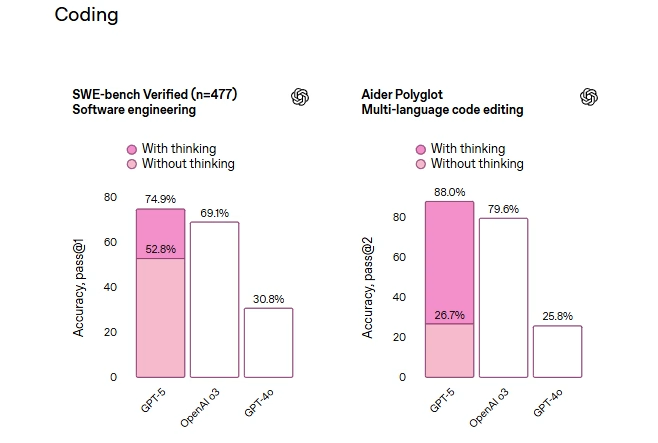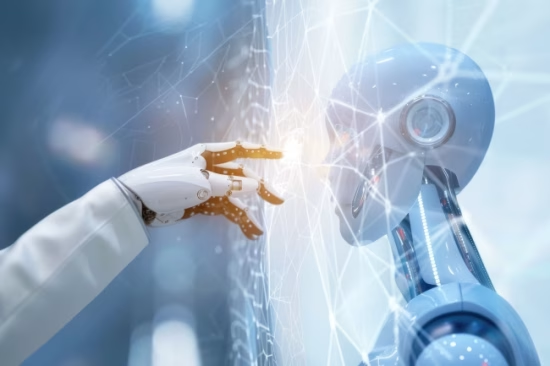So, OpenAI has finally launched its much-awaited AI model, GPT-5, on August 7, 2025.
And if the statements of its CEO, Sam Altman are believed to be true (which I generally don’t), it is the smartest AI model the company has ever built and brought to the public domain.
Sam appreciated the AI model because of its several features like state-of-the-art performance across coding, math, writing, health, visual perception, and more.
However, what drew attention from the launch of GPT-5 AI model was not how Sam called it the smartest model OpenAI ever built. It was his emphasize on the point that the model was a significant leap toward achieving so-far-hypothetical AGI (artificial general intelligence).
Read more: GPT-4.5: Exploring Open AI’s Latest Language Model
Frankly speaking, even that emphasize of Sam barely came to me as a big surprise.
Because I knew that OpenAI has been nurturing the dream of achieving AGI for a very long time. The launch of GPT-5, if the words by Sam are to be believed, is actually an overture to the desired achievement of AGI, an AI system said to do everything that human minds can think and execute.
Basically a human-version of an AI system.
Key Features of GPT-5 Model:
Advanced Reasoning performance
It is blazingly fast in answering prompts, like giving you results in math, coding, and benchmarks associated with health.
Reduced hallucinations
The model is said to have reduced hallucinations meaning very less chance for the model to give you fabricated or incorrect information.
Unified expert system
It is a smart, efficient AI model to get answers for most questions. Its deeper reasoning model known as GPT-5 thinking can answer harder problems. Its real‑time router that automatically chooses the best approach according to the conversation type, tool needs, and user intent.
To say in simple words, it instantly chooses the best way to answer your question based on what you ask and how complex it is.
Advanced multimodal and agentic capabilities
The model allows fluent and seamless interactions across different modes with better understanding and reasoning over text, images, charts, and diagrams. Sounds like an intelligent, smart assistant that can see and act for you, thanks to its advanced multimodality feature.
Improved healthcare and writing
The model GPT-5 is trained to be medically aware of how to decipher medical terminologies and even flag potential signs of serious illnesses. In terms of writing, it is said to generate more coherent, personalized and stylish outputs. No verbosity.
Greater user control
The model allows users to adjust verbosity parameter (low, medium, high) so that they can fine-tune the length and detail of the responses.

Image: OpenAI
One of the most striking features I have noticed in GPT-5, as per OpenAI’s data, is that the model has reduced sycophancy. If it is really true, then I think it is going to be a useful feature for the users like me who don’t appreciate a chatbot’s effusively agreeable responses.
Also, I hope that the feature of reduced hallucination is also true because I was so sick of ChatGPT’s fabricating answers. It almost had me believed that one of its responses was factual until I researched more on different online platforms, contradicting its answers.
It was a sheer waste of time, let alone witnessing its insufferable stupidity of cajoling me into believing something that was its own imagination.
Why does OpenAI believe that GPT-5 is a significant move toward achieving AGI?
AGI, as of now, is still believed to be a hypothetical concept. Nobody can say for sure how long it will take to ensure that the concept will have its materialization and in what time. However, Sam is full of optimism, saying AGI will be actualized in near future, though he is not revealing the exact timeline.
A significant milestone in achieving AGI
OpenAI is confident that GPT-5 is sort of a quantum leap in its pursuit to achieve AGI. And the company believes this based on the model’s expert-level intelligence across a wide range of complex domains and tasks showcasing advanced reasoning, and problem-solving. Also, it features multimodal understanding that is said to be closer in expertise similar to what a PhD-level expert has.
A model outpacing its old counterparts
GPT-5 comes equipped with advanced thinking, math, coding and the capability of understanding various types of information like texts, images, and videos. These features pronounce the efficiency of the model as a good use in handling real-world tasks (e.g. problems people face in their daily lives) with greater accuracy and reliability.
The AI model is believed to solve complex tasks requiring various steps to complete just by employing different tools together and thinking through complex issues much faster and more thoroughly than other models.
Sam Altman has already said that GPT-5 is a first model of its kind that truly performs like a PhD-level expert, thus making it a significant step toward AGI, though it lacks continuous real-time learning from the world.
The model also showcases fast, efficient thinking without wasting effort. It supports very large input/output contexts making it therefore a useful tool for users to have a more sustained and intricate interactions.
“A master of all trades” AI model
GPT-5, as per OpenAI, is a standalone model consisting of wide-ranging expert performance, improved multi-step tool use, multimodal reasoning, and improved safety, making it a nearly comprehensive AI model, not just a narrow specialized artificial intelligence.
Reality of GPT-5
What perceived to be a genius and more intelligent AI model, GPT-5 fell short on expectations.
In fact, the model courted significant backlash from the users calling it senseless and more robotic. Some users reported about the model’s technical glitches, incorrect responses and interestingly, a ‘colder’ personality vibe as observed by astute users.
Since I am not a programmer, I can’t tell how much reliable the model is for developers. But the model is heavily criticized for lacking flexibility, polarizing user experience and spewing robotic responses.
Downsides of GPT-5
- GPT-5 provided underwhelming user experience to the users, who called the model senseless and robotic. Some also observed that the model had colder personality, and technical hiccups.
- The feature of “reasoning” of GPT-5 was also met with criticism as many AI experts believed that the model generates deliberate verbose output. I think that’s because the model, like any AI models, is designed to boost user interaction and engagement.
- The model gives shorter and less detailed responses, even with its “thinking” mode activated. According to the users, the responses were less comprehensive and more clipped.
- It can also generate factually incorrect information. Moreover, when you run the model without the internet, the hallucination rate of it gets significantly higher.
- It runs into problems when generating complex, multi-file codebases. The model also gets confused or forgets details when dealing with long conversations.
Final words
Based on my theoretical understanding of GPT-5 model, and how OpenAI has pitched its relevancy in the company’s ambition to achieve artificial general intelligence (AGI), I don’t think that’s practically possible.
Though I am not sure what would pan out in near future, considering nobody knows what GPT versions would pop up the next day.
One thing is certain that OpenAI has virtually monopolized the AI competition. And it is just a matter of time when it comes up with a new launch of another GPT version packed with capabilities so much so that the existing one (GPT-5) would be replaced by it.
Sam Altman has already announced the arrival of GPT-6 near time soon. The model would provide personalized and adaptive interaction to the users by remembering their preferences, routines and habits. This means, according to me, how many GPTs would be required to achieve AGI? Because OpenAI and the ardent fans of it seems to celebrate launch after launch.
Anyway, the point in discussion is that every GPT model that OpenAI comes up with replacing the existing one with its new counterpart is like inching slowly to its dream of accomplishing the goal of AGI.
However, AGI is not any ordinary model that is achievable just like that. Years of hard work, patience, tenacity, wealth, and efforts are required to achieve something as supremely powerful as AGI.
At least, I can’t be sure that GPT-5 is a definite overture to an AGI. And I don’t want to endorse statements of Sam nor OpenAI in this context. Since this is their product, they will understandably pitch for its viability in achieving AGI.
To me, everything seems just a fabrication of a dystopian future led by intelligent machines. It may happen but the exact timeline is just everyone’s guesswork.
